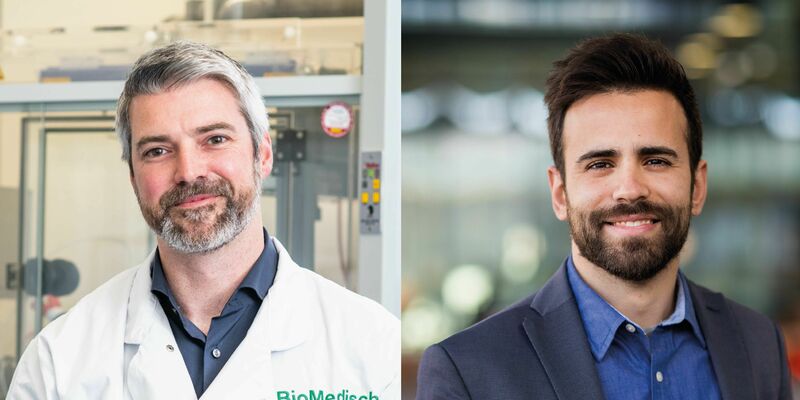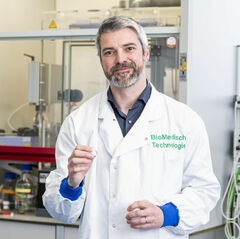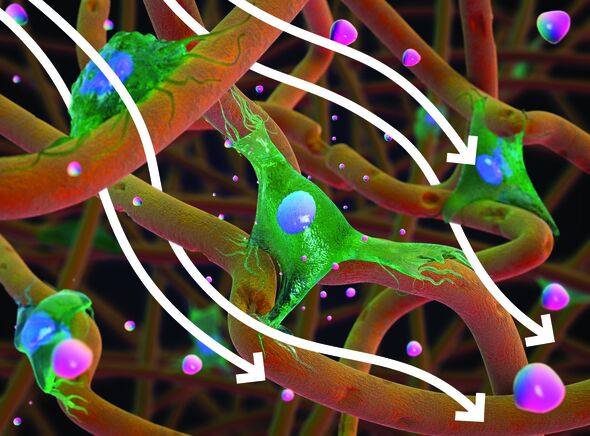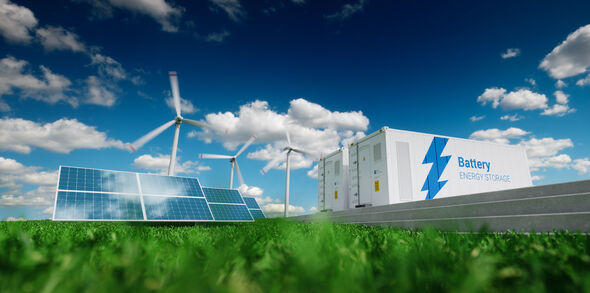
- The University , Research
- 10/01/2022
ERC grants for immune system and energy storage research
For TU/e researchers Anthal Smits and Antoni Forner-Cuenca the new year has started with great news as each has been awarded European Research Council (ERC) Starting Grants worth 1.5 million euros. Smits will use the funding to work on immune system response to implants, while Forner-Cuenca will explore new affordable and renewable battery storage systems. The researchers can use the funding for their research over the next five years.
Anthal Smits, who is an Assistant Professor in the Soft Tissue Biomechanics and Tissues Engineering group in the department of Biomedical Engineering, has big plans for the future of implant technologies with his ERC-funded project MACxercise.
“The demand for sophisticated medical implants is exponentially growing, but the main challenge with implants is ensuring that the body’s immune system rapidly accepts an implant, rather than rejecting it outright,” says Smits. “And in this research project, we’ll use the immune response to our advantage!”
Smits plans to make implants from bioresorbable synthetic biomaterials that are gradually replaced with living tissue inside the body, but key to the project is getting help from immune cells known as macrophages. “Macrophages are the gatekeepers to the successful integration of implants. The plan is to harness their immune response that will lead to certain biochemical and microstructural changes.”
Macrophage tennis
Normally, macrophages are studied under static-like laboratory conditions, but in the body, these cells are subject to forces and movements due to breathing, heartbeat, and body movement. “I’m keen to know which forces and movements most affect the macrophages,” Smits adds.
To explain further, Smits presents an analogy involving painting and tennis. “Suppose you’re a great painter. However, would you still be able to paint a great picture while playing tennis at the same time? In this project, we’ll place macrophages on the tennis court so we can study their behavior under life-like conditions. So, the project acronym MACxercise is short for ‘macrophage exercise’.”
To achieve this goal, Smits will be looking at how macrophages sense and respond to mechanical loads. “Without an in-depth understanding of macrophage mechanobiology and its effect on bioimplants, it’s almost impossible to design proper biomaterials for successful and effective implants.”
This ambitious project will aim to combine new and innovative research from different fields such as biomaterial science, immunology, and tissue engineering. “MACxercise will help to decipher how macrophages operate in their microenvironment and how their actions affect implant and their materials,” adds Smits.
Electrode microstructures
With his ERC Starting grant, Antoni Forner-Cuenca, who is an Assistant Professor in the Department of Chemical Engineering and Chemistry, aims to make an impactful contribution to the field of electrochemical science by investigating new low-cost energy storage technologies.
“Motivated by issues with renewable energy technologies, there has been lots of recent progress in electrochemical energy storage for large scale applications,” says Forner-Cuenca. “For instance, redox flow batteries have emerged as promising systems, but these technologies have high costs.”
“In this project, I will investigate a new concept that relies solely on low-cost and abundant materials to design an affordable energy storage system based on iron and air, a so-called Fe-air redox flow battery (FAIR-RFB),” Forner-Cuenca explains. To achieve this, he plans to address several challenges with regards to designing electrodes for FAIR-RFBs.
Challenges ahead
First, Forner-Cuenca will explore new ways of designing electrode microstructures. “The plan is to combine computational methods such as evolutionary algorithms with experiments to predict the optimum shape, size, and porosity.”
Next, he will study how the electrode surface affects the transport of charge and chemicals. The team will then place selected molecules on the electrodes and perform nanoelectrochemical imaging to assess how these changes affect electrode performance.
Finally, Forner-Cuenca and his team will develop an electrochemical reactor for high-power FAIR-RFBs. “This stage of the project will build on the previous stages, and the aim is to make advanced iron and air electrodes that yield a high voltage and low resistance electrochemical cell.”
Forner-Cuenca, who also received additional funding of 400,000 euros to purchase a sophisticated scanning electrochemical microscope, is confident that this project will lead to significant breakthroughs in the field of electrochemical energy storage systems. “The new fundamental learnings and novel concepts developed for FAIR-RFBs will help improve the performance and durability of low-cost energy storage technologies, which could have significant implications for integrating renewable sources (wind, solar) and help decarbonize the electricity grid.”




Discussion